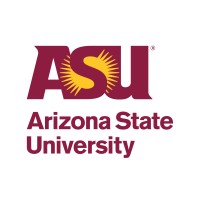
Arizona State University
ASU has developed a new model for the American research university, creating an institution committed to excellence, access and impact — the New American University. Nationally and internationally acclaimed, ASU ranks among the very best in nearly every critical measurement of student success, outcomes of groundbreaking research and impact in the communities it serves. ASU is among the top 1% of universities in the world, has been repeatedly ranked No. 1 in multiple categories and is currently ranked No. 2 in the U.S. for employability among public universities. ASU is home to a vibrant, thriving global network of alumni — leaders, doers, shapers and learners, and serves graduate and undergraduate students across four Phoenix Metropolitan area campuses, online and throughout the U.S., including locations in California, Hawai‘i and Washington, D.C. Follow our page for the latest stories and updates from ASU.






